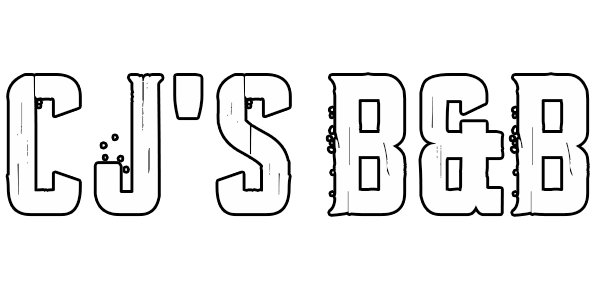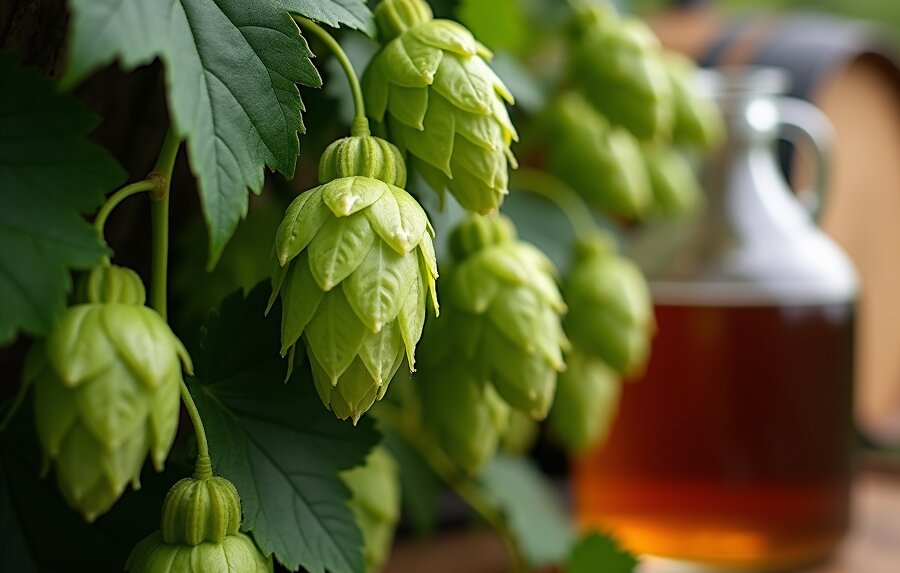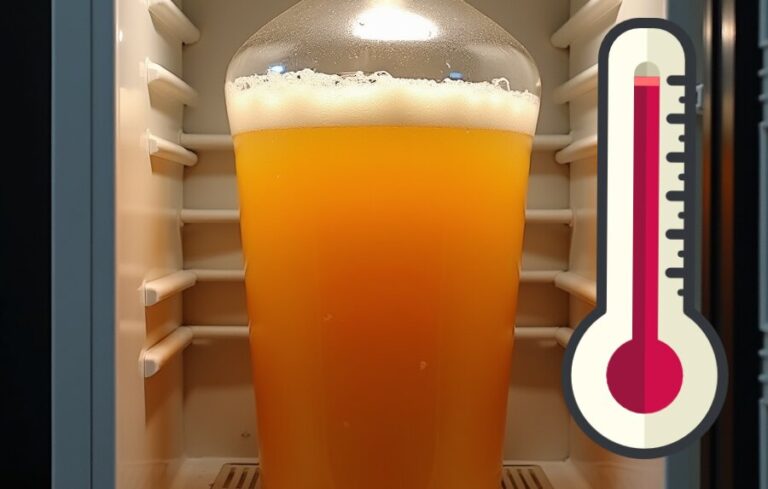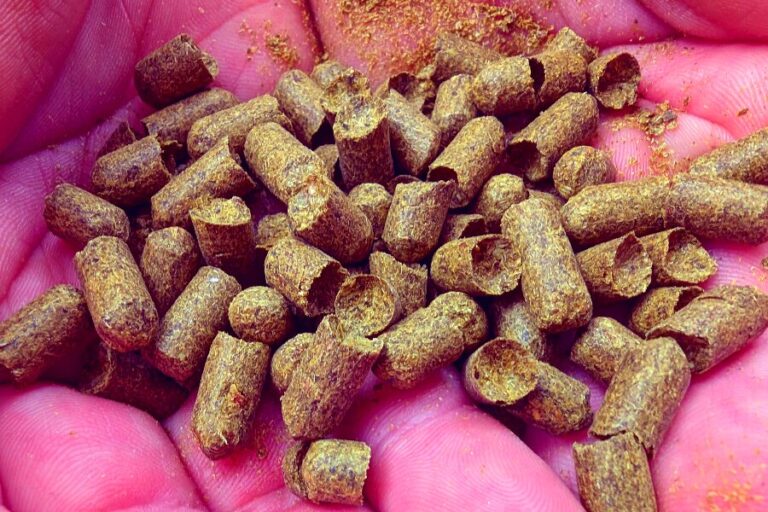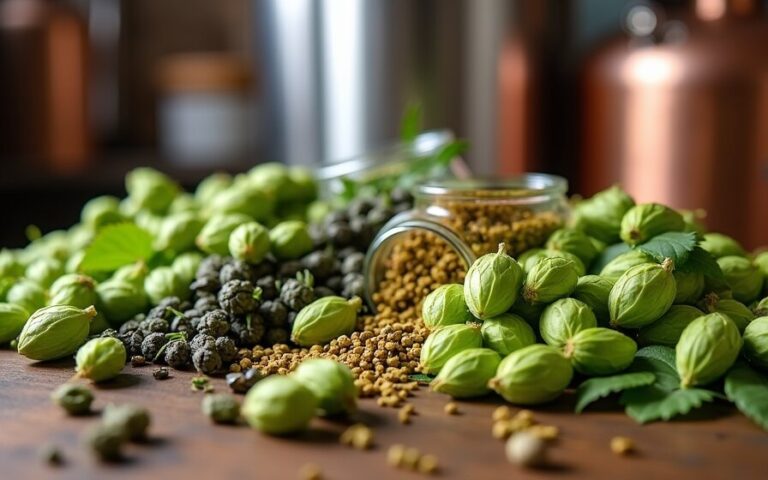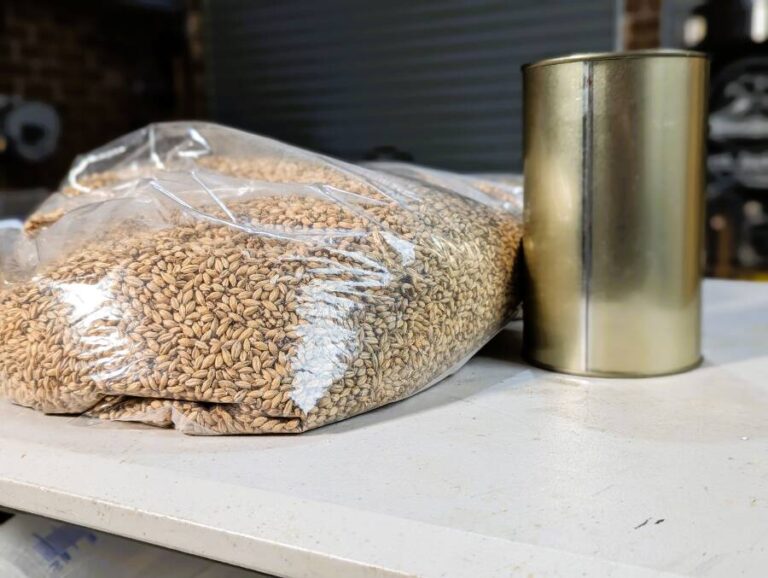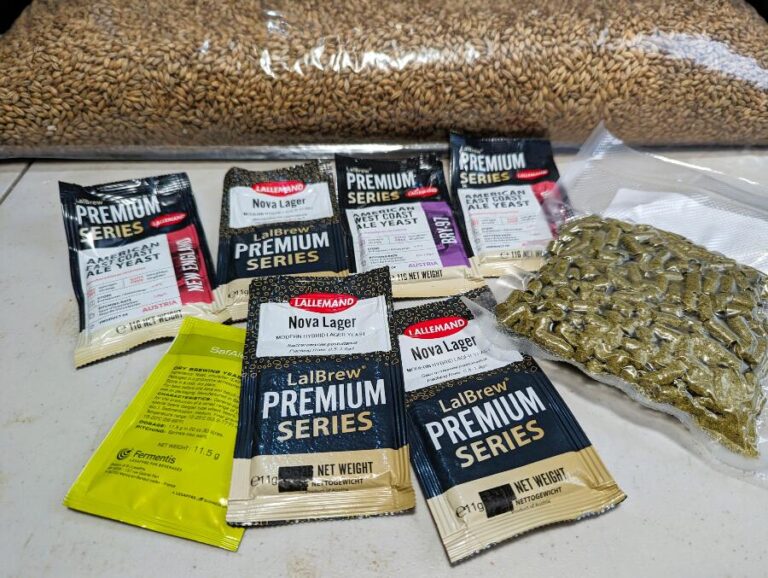Our evaluations and product assessments are conducted using a thorough and unbiased approach. Should you choose to buy any items through our provided links, we might receive a commission Read our disclosures.
Exploring Hop Flavours In Homebrewing
As I delve into the world of homebrewing, understanding hop flavours is essential for creating the perfect brew. Hops not only contribute bitterness but also enhance the aroma and flavour profile of my beer. In this section, I will explore the differences between whole cone and pellet hops, as well as how to maximize hop flavours during brewing.
Whole Cone vs. Pellet Hops
In my brewing experiments, I’ve noticed a distinct difference between whole cone hops and pellet hops. A recent study revealed that participants could reliably distinguish beer made with whole cone hops from that made with pellet hops. Out of 21 tasters, 12 correctly identified the unique sample, highlighting that the form of hops used can impact the final flavour (Brülosophy).
| Hop Type | Flavour Characteristics | Storage Longevity |
|---|---|---|
| Whole Cone Hops | Often fresher, more aromatic | Shorter shelf life |
| Pellet Hops | Concentrated flavours, longer-lasting | Longer shelf life |
While some tasters preferred whole cone hops, others favored pellet hops, and many had no preference despite noticing differences. It’s evident that the choice between these two forms can affect the overall flavour experience (Brülosophy).
Pellet hops tend to last longer than whole hops, especially when stored properly. In one experiment, cascade pellets stored at room temperature retained their citrus aroma after two months, while whole leaf hops turned brown and developed an off-putting smell (MoreBeer). This resilience makes pellet hops a practical choice for homebrewers like me, particularly if I’m short on storage space.
Maximizing Hop Flavours In Homebrewing
To truly maximize hop flavours in my homebrew, I consider several factors. The timing of hop additions plays a critical role. Adding hops early in the boil contributes to bitterness, while later additions enhance flavour and aroma. I often experiment with different timing to achieve the desired balance.
Another aspect to consider is the utilization of hops. Factors like the boil time and temperature can influence how well the hops impart their flavours. I’ve found it helpful to refer to resources on hop utilization in homebrewing for more in-depth techniques.
Moreover, using a combination of different hop varieties can create complex flavour profiles. By blending hops, I can achieve a unique taste that stands out. If I’m looking for suggestions, I often check out lists of the best hops for homebrewing that pair well together.
In summary, my experiences with whole cone and pellet hops have taught me that the choice of hop form, along with their utilization and timing, significantly influences the flavours in my homebrewed beer. With careful consideration and experimentation, I’m able to unlock a world of hop flavours that truly enhance my brewing adventures.
Impact of Hop Varieties
When I’m brewing my own beer, the choice of hop varieties can dramatically influence the final flavour profile. Each hop variety brings its unique characteristics, from bitterness to aroma. Here’s a closer look at some prominent hop varieties that I often consider when exploring hop flavours in homebrewing.
Golding Hops
Golding hops are an old English variety that I find particularly delightful. They have a sweet floral character and medium bitterness, with an alpha acid range of 4-6%. I love using them primarily for flavour and aroma, especially as a dry hop in English Pale Ales. There are regional variations like Kent Goldings, East Kent Goldings, and Styrian Goldings, which may have subtle flavour differences that are fun to explore.
| Characteristic | Value |
|---|---|
| Alpha Acid | 4-6% |
| Flavour Profile | Sweet floral, medium bitterness |
For more information on hop varieties, check out our article on best hops for homebrewing.
Centennial Hops
Centennial hops are a go-to for me when brewing American beer styles. They provide classic citrus and floral flavours, with an alpha acid content of over 10%. I often use them as a bittering hop, but I also enjoy adding them later in the boil for a robust aroma.
| Characteristic | Value |
|---|---|
| Alpha Acid | Over 10% |
| Flavour Profile | Citrus, floral |
Tettnanger Hops
Tettnanger hops are one of the original Noble hops, which I appreciate for their low bitterness and high aroma. They are known for floral and spicy aromas, and when boiled for longer periods, they can produce subtle black tea-like flavours. I find them perfect for German-style beers and Belgian Abbey or Farmhouse ales.
| Characteristic | Value |
|---|---|
| Alpha Acid | Low |
| Flavour Profile | Floral, spicy, black tea-like |
Saaz Hops
Saaz hops are essential in my Bohemian Pilsner recipes. They have a low alpha acid content of around 3.5% and are known for their spicy, herbal, and piney characteristics, lacking citrus notes. I love how they add complexity to a clean and crisp malt profile.
| Characteristic | Value |
|---|---|
| Alpha Acid | 3.5% |
| Flavour Profile | Spicy, herbal, piney |
Simcoe Hops
Simcoe hops are a newer American variety that I often reach for. With a 9% alpha acid content, they are versatile enough for bittering, flavour, or aroma. I particularly enjoy using them as dry hops, as they enhance fruity characteristics, reminiscent of pineapple rather than the typical orange or grapefruit notes.
| Characteristic | Value |
|---|---|
| Alpha Acid | 9% |
| Flavour Profile | Fruity, pineapple-like |
As I continue to explore the world of homebrewing, I find that each hop variety has its own unique impact on the final product, making the brewing process an exciting journey. For those interested in the science of hop utilization, I recommend checking out our article on hop utilization in homebrewing to deepen your understanding.
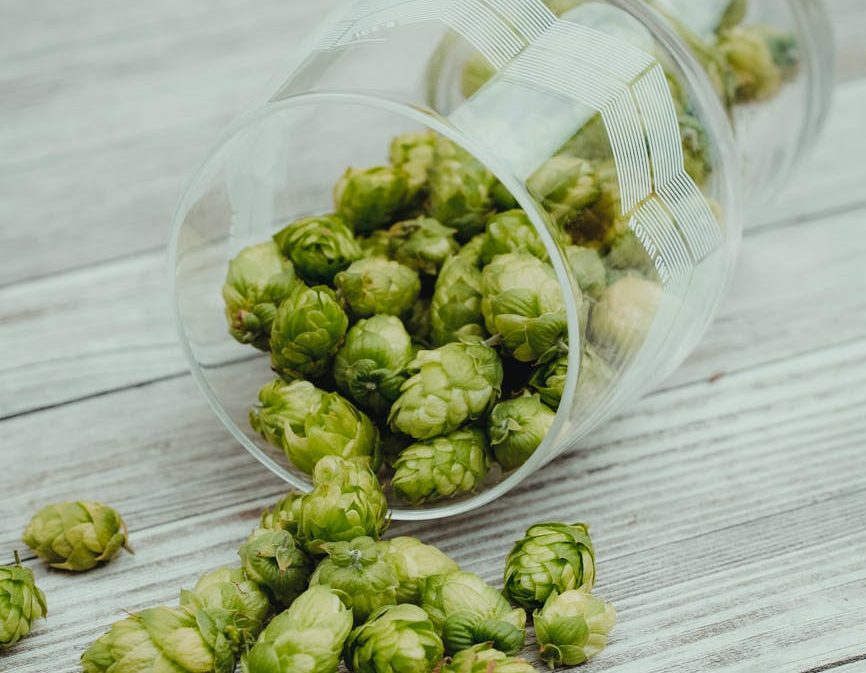
Understanding Hop Utilization
Understanding hop utilization is essential for maximizing the flavour and aroma in my homebrew beer. I find that various factors influence how effectively hops contribute to the final product, and proper storage techniques can also play a significant role in maintaining hop quality.
Factors Affecting Utilization
Several elements can impact hop utilization, including the type of hops used, the boiling time, and the alpha acid content. In my experience, the form of hops—whether whole cone or pellet—also affects utilization rates. While no specific measurement exists comparing whole cone hops to pellet hops, it is suggested that the pulverized nature of pellets may provide more surface area in contact with the wort, leading to potentially higher utilization rates.
| Factor | Description |
|---|---|
| Hop Form | Pellet hops may have higher utilization due to increased surface area. |
| Boil Time | Longer boiling times can enhance the extraction of flavours and bitterness. |
| Alpha Acid Content | Higher alpha acid levels in hops lead to increased bitterness. |
Hop Storage and Longevity
Proper storage of hops is vital for maintaining their flavour and aroma. Based on my findings, pellet hops tend to have a longer shelf life compared to whole hops. For instance, Cascade pellets stored at room temperature showed minimal color change and retained some citrus aroma even after two months. In contrast, leaf hops stored under the same conditions turned brown and developed an undesired smell.
To ensure maximum freshness, I prefer to store my hops in the freezer. This method seems to keep their quality intact for an extended period. Here’s a quick summary of hop storage recommendations:
| Hop Type | Storage Method | Longevity |
|---|---|---|
| Whole Cone Hops | Room Temperature | Shorter lifespan, prone to decay |
| Pellet Hops | Room Temperature | Longer lifespan, minimal change after two months |
| All Hops | Freezer | Best longevity, retains flavour and aroma |
In my brewing journey, I have discovered that both pellet and whole cone hops can provide similar aromatic qualities when used for dry hopping. However, fresh whole cone hops often exhibit a more intense aroma initially, which tends to fade over time (MoreBeer).
Understanding these factors helps me to optimize my use of hops in brewing, ensuring I achieve the best hop flavours in homebrewing. For more insights on effective hop use, I recommend checking out articles on hop utilization in homebrewing and best hops for homebrewing.
Optimizing Hop Additions
One of the most exciting aspects of homebrewing is experimenting with hop flavours. I’ve found that optimizing hop additions is key to achieving the desired taste in my brew. This section covers the roles of different types of hops, hop addition timing, and how the form of hops can impact bitterness.
Bittering, Flavouring, and Aroma Hops
Hops are typically added to the wort in three stages during the boil: bittering, flavour, and aroma. Each stage plays a specific role in the final flavour profile of the beer. Interestingly, the same hop variety can be utilized across all stages. Not every beer requires all three additions; some may only need one, while others might benefit from five or six additions.
| Hop Addition Stage | Purpose |
|---|---|
| Bittering | Balances the sweetness of the malt |
| Flavour | Adds depth and complexity |
| Aroma | Enhances the overall fragrance of the beer |
Every brew I make includes at least one hop addition for bitterness to achieve a balanced flavour (Midwest Supplies).
Hop Addition Timing
The timing of hop additions can significantly influence the final product. Traditionally, many brewers followed the 60/20/5-rule for hop additions, but the rise of New England IPA (NEIPA) styles has changed this approach. These styles often incorporate large amounts of hops added at flameout, in a whirlpool, or as a dry hop addition, sometimes skipping the boil altogether. This shift has led to later hop additions for styles like American IPA and American Pale Ale (Cascades Homebrew).
Current research shows that many hop oils are volatile. Boiling can cause these oils to dissipate quickly, which is why I’ve started adding hops after the boil to preserve their taste and aroma (Cascades Homebrew).
Impact of Hop Form on Bitterness
The form of hops—whether they are pellets or whole leaf—can influence the brewing process. In a split batch experiment using Cascade hops, it was observed that the hop form had a negligible effect on perceived bitterness, as long as the alpha acid content and boil time were comparable. Judges often could not distinguish between beers made with leaf hops and those made with pellet hops in terms of bitterness.
This means I can feel confident using either form depending on what’s available. Ultimately, the choice may come down to convenience or personal preference.
By understanding these aspects of hop additions, I can better tailor my homebrewing processes to enhance the hop flavours in my beer. For more information on hop utilization, feel free to check out our article on hop utilization in homebrewing.
Blending Hop Varieties
Blending different hop varieties is one of the most exciting aspects of homebrewing. It allows me to create complex flavours and unique profiles that can elevate my beer to new heights.
Creating Complex Flavours
When I blend hops, I aim to achieve specific flavour profiles. For example, combining fruity and floral hops with earthy and piney hops can result in a beer that has depth and character. Each hop variety offers its unique taste and aroma, which can complement or contrast with one another.
For instance, blending a hop like Cascade, known for its citrus notes, with a more earthy hop such as Fuggle can create a balanced flavour profile that appeals to a wide range of palates. Here’s a simple table illustrating some common hop blends and their characteristics:
| Hop Combination | Flavour Profile |
|---|---|
| Cascade + Fuggle | Citrusy with earthy undertones |
| Simcoe + Citra | Tropical and fruity |
| Centennial + Amarillo | Piney with floral notes |
| Saaz + Tettnanger | Spicy and herbal |
Exploring these combinations is a fun way to experiment and find what works best for my brewing style.
Experimenting with Hop Combinations
I’ve found that experimenting with different hop combinations can lead to surprising and delightful results. Using hops for various purposes—bittering, flavouring, and aroma—provides flexibility. For example, I often use the same hop variety for both bittering and aroma. In one of my recent brews, I added 1 oz. of Cascade hops at the beginning of the boil for bitterness and another ounce just before finishing to enhance the aroma.
The timing of hop additions can also significantly affect the final flavour. Adding hops at various stages of the brewing process introduces complexity into the beer. While bittering hops provide the necessary bitterness, aroma hops added later bring delightful scents and flavours that can transform the drinking experience.
Moreover, I’ve learned that late hop additions can help retain more hop oils, which are crucial for flavour and aroma (Scott Janish). For example, dry hopping with pellet hops has shown to increase the extraction of oils compared to whole cone hops, enhancing the overall hop flavour in my brews.
Blending hop varieties not only enhances the complexity of my homebrew but also allows me to explore my creativity. Whether I’m crafting a hoppy IPA or a balanced lager, the right combination of hops can make all the difference. For more ideas, check out our guide on best hops for homebrewing and hop substitutions for homebrewing.
Hop Oils and Aromas
Understanding hop oils and their role in brewing has been a game-changer for me as a homebrewer. The oils in hops contribute significantly to the aroma and overall flavour of the beer, making them an essential component in achieving the desired hop flavours in homebrewing.
Role of Hop Oils in Beer
Hops contribute aroma to beer through various oils such as myrcene, humulene, and caryophyllene, which are the primary aroma components. These oils are best captured by adding hops late in the boil (aroma addition) or during fermentation (dry-hopping). I’ve found that using these methods helps to retain the vibrant hop characteristics in my homebrews.
| Aroma Component | Characteristics |
|---|---|
| Myrcene | Earthy, herbal, and citrus notes |
| Humulene | Spicy and woody aromas |
| Caryophyllene | Peppery and clove-like scents |
Retaining Aroma During Brewing
It’s important to note that the majority of hop oils can escape during the boil. A study by Kishimoto indicated that levels of myrcene and linalool decrease rapidly due to their low boiling points, while other oils like humulene and caryophyllene remain during the boil. To keep those delightful hop aromas intact, I’ve started using late hop additions and dry-hopping techniques.
Furthermore, during fermentation, hop oils significantly decrease, particularly floral compounds like myrcene. Linalool tends to hang around longer, but it still decreases by nearly half. Knowing this has helped me strategize how I approach hop additions.
Biotransformation by Brewing Yeast
Biotransformation is another fascinating aspect of hop oils that I’ve learned about. Brewing yeast can transform terpenoids, which are present in hop oils, into different compounds. For example, geraniol can be converted into citronellol, and linalool can turn into terpineol. A study from 2003 found that this transformation is linked to the increase in yeast biomass during fermentation.
To minimize this process, I’ve started dry hopping after the first few days of active fermentation. This helps preserve the aromatic qualities of the hops while still allowing the yeast to do its job. Additionally, the concentration of linalool and myrcene tends to decrease after the first full day of dry hopping.
Overall, the interplay of hop oils, brewing techniques, and yeast activity is vital in crafting the perfect homebrew. With careful planning and a little experimentation, I’m excited to see how my brews continue to evolve in flavour and aroma. For more insights on hop utilization, you might find it helpful to read hop utilization in homebrewing.

